
|
| Accomodation | Childcare | History | Location and Directions |
Speakers

|
Reuven Agami
(Amsterdam)
The p53 function is frequently compromised in tumors, in part as a consequence of somatic mutations which occur in more than half of all human cancers. Until recently, the p53 network was mainly characterized by its impact on protein-coding target genes. However, we now begin to discover and appreciate the great potential of ncRNAs in the intricate regulatory network of p53. We found that p53 binds enhancers to produce enhancer RNAs that are required for its impact on key target genes. We also uncovered a role for long non-coding RNAs in the regulation of p53-dependent transcription and in cancer. Thee aspects of p53 function will be discussed during the meeting. |
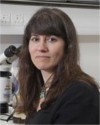
|
Andrea Brand
(Cambridge)
The systemic regulation of stem cells ensures they meet the needs of the organism during growth and in response to injury. A key control point is the decision between quiescence and proliferation. Drosophila neural stem cells (NSCs) enter quiescence in late embryogenesis and are reactivated post-embryonically in response to a nutrition-dependent signal from the fat body. We identified a population of glial cells that overlie NSCs and secrete Insulin/IGF-like peptides locally in response to nutrition. We found that insulin signalling is essential for NSCs to exit quiescence. Insulin signalling can also promote proliferation in vertebrate neural stem cells, suggesting that the mechanisms controlling stem cell reactivation may be conserved. We are investigating the systemic and local signals that regulate neural stem cell quiescence and reactivation. |
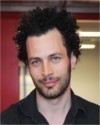
|
Julius Brennecke
(Vienna)
Genetics and genomics of transposon control in the Drosophila germline. |
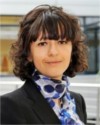
|
Emmanuelle Charpentier
(Braunschweig)
CRISPR-Cas9: an ancient bacterial immune system harnessed for genome engineering |
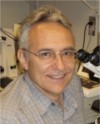
|
Victor Corces
(Atlanta)
The eukaryotic genome is arranged in the three-dimensional nuclear space in a specific manner. This organization may be both a consequence and a determinant of transcriptional activity. We are studying the role of architectural proteins in the establishment of nuclear 3D organization and the contribution of this organization to the creation of specific patterns of transcription during cell differentiation. |

|
Bart Deplancke
(Lausanne)
My lab is using microfluidics, high-throughput sequencing, large-scale yeast screens, and computational approaches to characterize the regulatory code in Drosophila and mammals and to examine how variations in this code affect molecular and organismal diversity. |

|
Eileen Furlong
(Heidelberg)
The Furlong group dissect general mechanisms by which transcription and regulatory networks specify cell fate decisions during embryonic development. We combine genomic, genetic and computational approaches to (1) understand the general principles by which cis-regulatory elements control complex patterns of temporal and spatial activity; (2) examine how dynamic changes in enhancer properties and three dimensional looping drives cellular transitions and (3) gain an understanding of how robust developmental progression is achieved. |
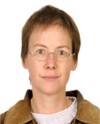
|
Anne-Claude Gavin
(Heidelberg)
Our group has pioneered biochemical methods, coupled to quantitative mass-spectrometry, with the aim of systematically linking dynamic protein interaction networks to various phenotypes in model organisms, human cells and human pathogens. Long term, we aim to advance network biology and medicine through the integration of quantitative biochemistry, proteomics and structural biology, and define system-wide hypotheses explaining complex phenotypes and human diseases. We will contribute new strategies for the targeting of human pathologies and provide insight into fundamental principles and rules guiding biomolecular recognition. |
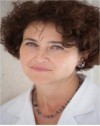
|
Edith Heard
(Paris)
Our lab is interested in understanding how one of the two X chromosomes is silenced during early female development. We are searching for the mechanisms that initiate the developmentally regulated mono allelic control of X inactivation via the X-inactivation centre; as well as the mechanisms that underlie chromosome-wide gene silencing and formation of heterochromatin, triggered by the action of the non-coding Xist RNA. The process of X inactivation provides a paradigm for epigenetic changes in development and a model for exploring epigenetic instability in diseases such as cancer. |
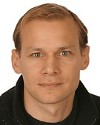
|
Lars Hufnagel
(Heidelberg)
Bioimaging across scales: from within cells to embryos |

|
Matthias Mann
(Martinsried)
Proteomics in gene regulation and genetics |

|
Gene Myers
(Dresden)
We are now at a time when we can systematically alter animals genetically so that any given protein or its expression can be observed in a targeted set of cells. Combined with new modalities of light microscopy, this allows us to observe molecular mechanisms within the cell, observe the developmental trajectory of growing organs, and to map the cellular anatomy of organisms and organs such as a fly brain. Several brief examples from our work will be presented: on the biophysics of cell division, on C. elegans lineage tracking, and on the reconstruction of every neuron in a fly brain. To end, we give a vision of microscopes and software that we hope will lead to an understanding of how complex tissues and shapes develop in cellular terms. |

|
Magnus Nordborg
(Vienna)
The central theme of our group is the genetic basis of adaptation. A combination of empirical and theoretical approaches from population genetics and related areas, such as statistical genetics and molecular evolution, are used. Empirical research focuses on Arabidopsis thaliana but we work on a wide range of organisms, including primates. |

|
Josef Penninger
(Vienna)
Our basic approach is to genetically manipulate and change genes in mice and to determine the effects of these mutations in development of the whole organism and in diseases. From these mutations we are trying to establish basic principles of development and basic mechanisms of disease pathogenesis. |

|
Paola Picotti
(Zurich)
Our group is applying system-wide omic approaches to studying the functional and pathological consequences of protein aggregation in cells. We are also involved in the development of publicly accessible tools to promote the dissemination of targeted proteomics to the scientific community. A recent contribution of our research group was the development of a novel structural method to analyze protein conformational changes in complex biological backgrounds and on a system-wide level. We are currently using this approach to study the structural conversions of amyloid forming proteins directly in their cellular environment and to detect novel allosteric interactions in the yeast proteome. |

|
Alex Stark
(Vienna)
The regulation of gene expression is crucial during development and adult physiology. Our group is interested in how transcriptional regulatory information is encoded in the DNA sequences of animal genomes and in the cellular machinery that decodes this information. We're employing systematic large- and genome-scale experimental approaches combined with bioinformatics and machine learning to decipher gene regulation. |
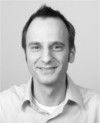
|
Jacco van Rheenen
(Utrecht)
Complication of metastasis, the process in which cells detach from the primary tumor to form new distant tumor sites, is the primary reason why patients die from cancer. The metastatic behavior of tumor cells is highly dependent on the cell's intrinsic characteristics and on the tumor microenvironment, such as stromal cells and the extracellular matrix. We study both by combining conditional mouse models that recapitulate human tumors and intravital imaging techniques (imaging of tumors in living animals in real time at subcellular resolution). By these experiments we hope to identify new drug targets that combined with current clinical approaches may lead to new therapies. |
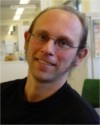
|
Bas van Steensel
(Amsterdam)
Van Steensel lab develops and applies new genomics technologies to study the architecture and functions of chromosomes and chromatin. We use both Drosophila and mammalian cell lines as model systems. |

|
Marc Vidal
(Boston)
Modeling of human disease needs to consider, besides single gene or single pathway perturbations, global perturbations of cellular systems. A prerequisite to global modeling of cellular systems is the availability of macromolecular interactome network maps. Since 1993, I have been developing tools, concepts and strategies to map, model and systematically perturb protein-protein interactome networks in diverse model organisms and in human. My initial focus on the multicellular model organism Caenorhabditis elegans has been expanded to the yeast Saccharomyces cerevisiae, the plant Arabidopsis thaliana, to human, and to interactions between viral and host proteins. These efforts have derived functional and dynamic models and have uncovered global properties of interactome networks. |

|
Fiona Watt
(London)
Stem cell behaviour is controlled both by intrinsic mechanisms and by external signals from the local microenvironment or niche. Interactions with the niche are reciprocal, since stem cells are capable of remodelling their environment. Using adult epidermis as an experimental model, my lab is investigating the interplay between specific intrinsic and extrinsic signals in regulating stem cell fate, using a range of in vitro and in vivo approaches. |

|
Valerie Weaver
(San Francisco)
Stromal-epithelial interactions regulate tissue development and homeostasis. In particular, the extracellular matrix, which is the noncellular component of the microenvironment, influences cell growth, survival, migration and tissue-specific differentiation through a repertoire of cellular receptors including integrins, syndecans and discoidin receptors. Dr. Weaver will discuss her groups exploration of the molecular mechanisms whereby these extracellular matrix receptors modulate cell fate. Specifically, her group is investigating how mechanical and topological properties of the matrix, which are related to its composition and organization, regulate the function of matrix receptors to alter cell behavior. |
© 2015 Cologne Spring Meeting | spring-meeting[at]uni-koeln.de | Impressum | Last changed: 27.03.2015